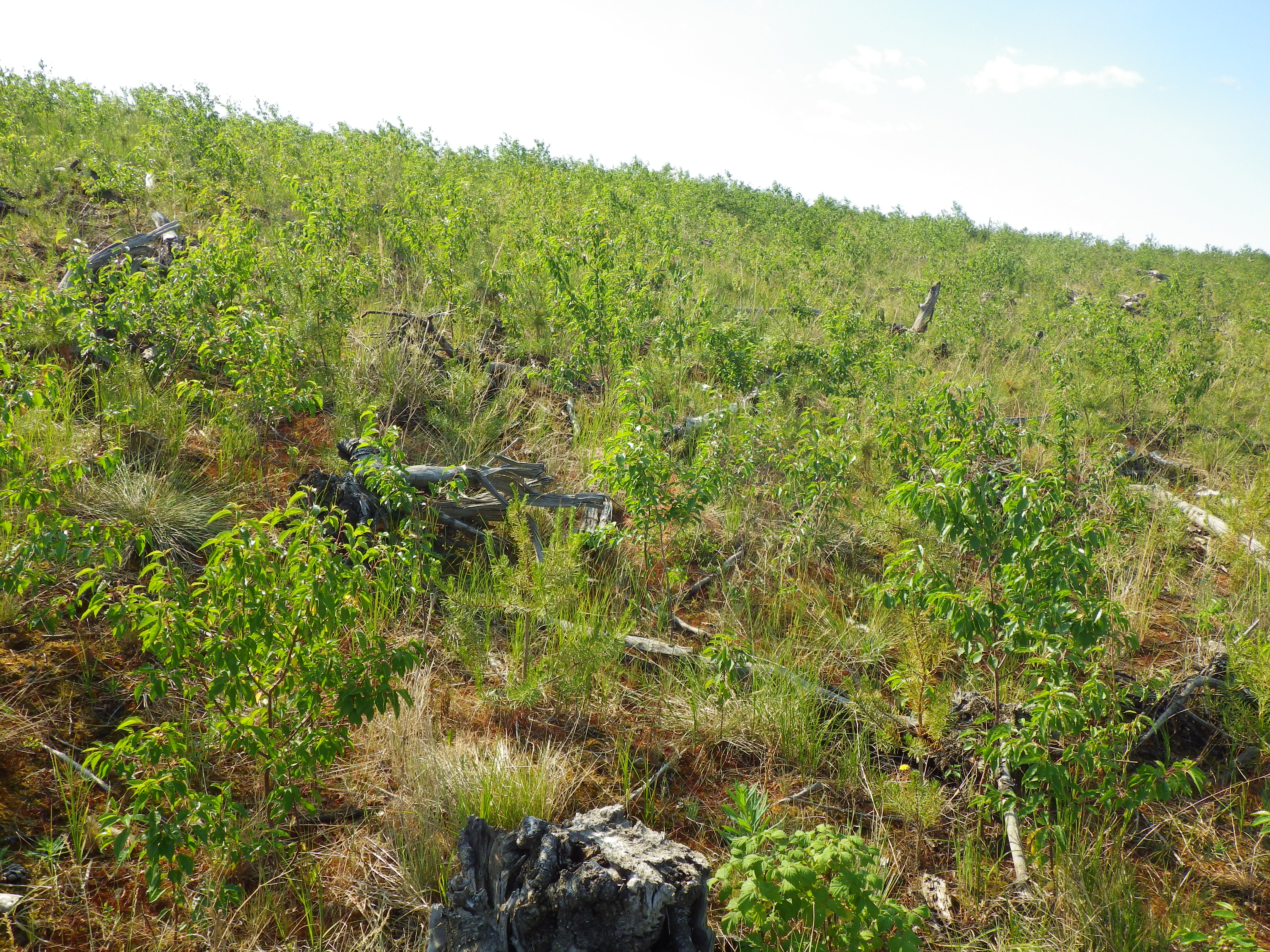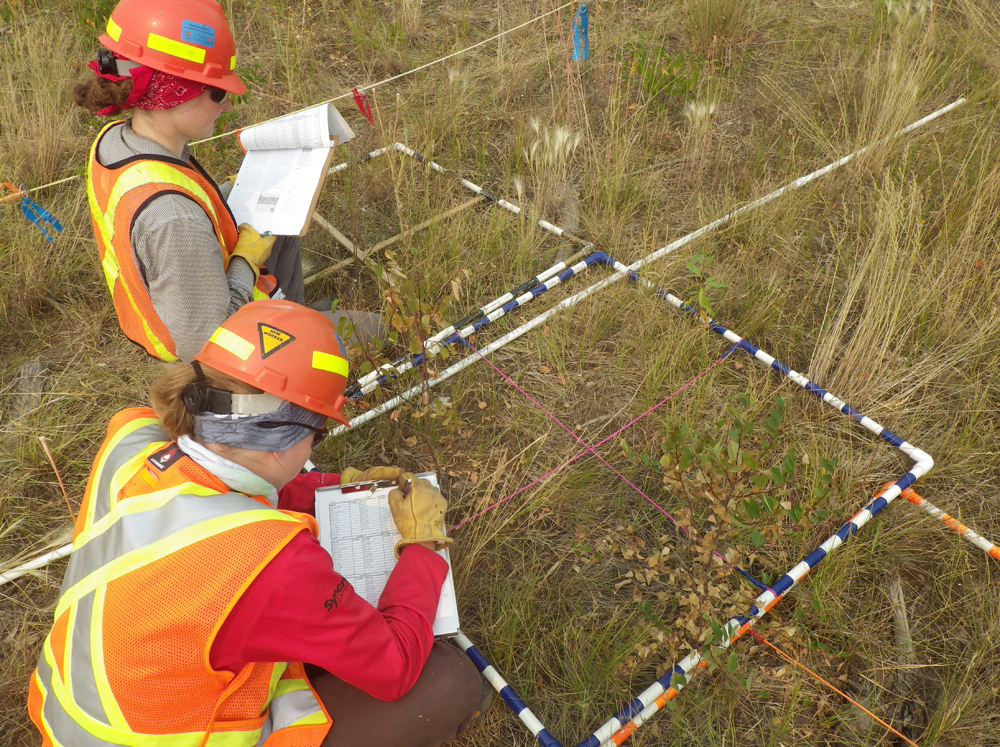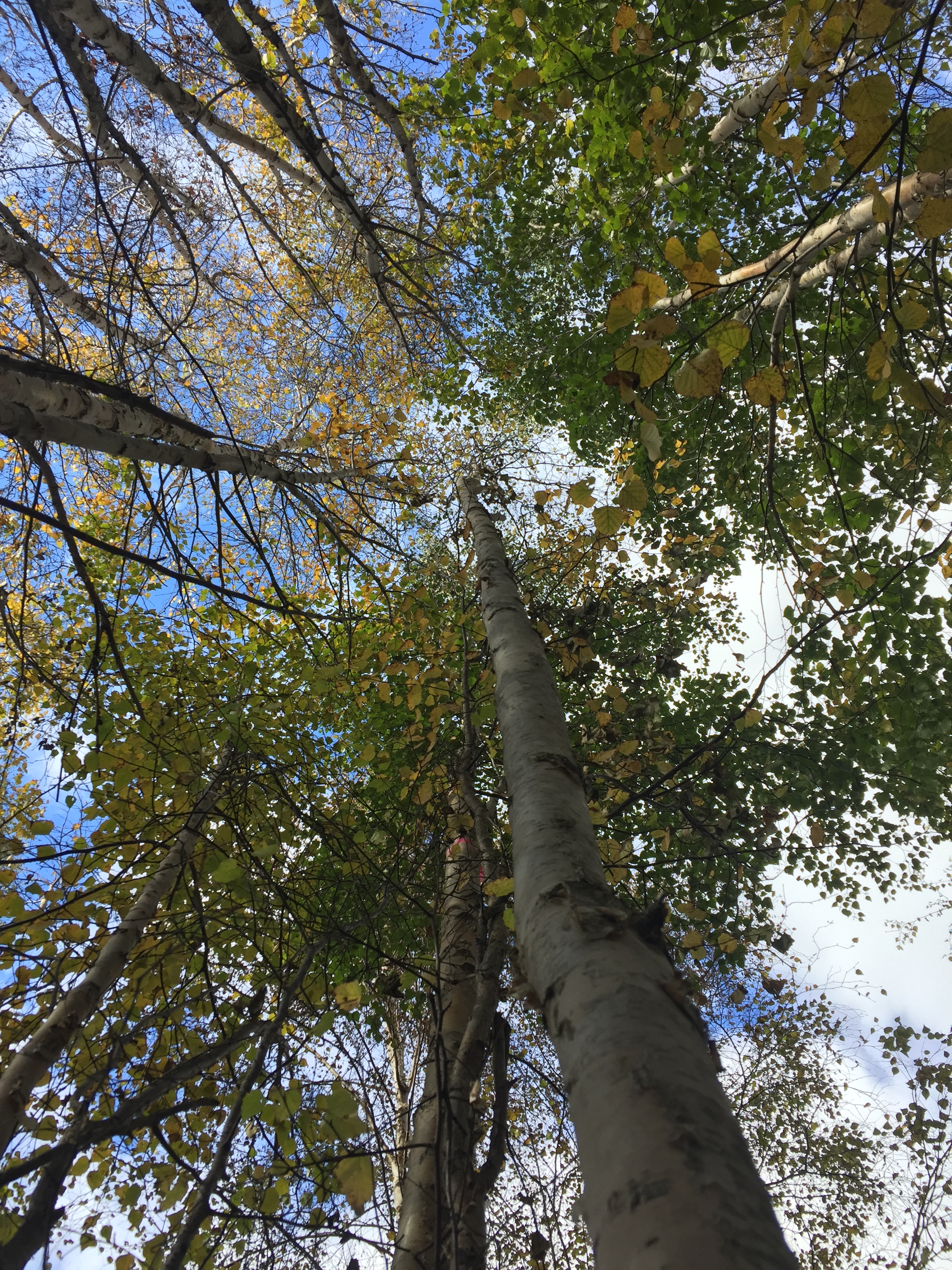Our research is dedicated to answering scientific questions that underlie restoration challenges, and falls into two main areas. First, we are conducting basic research into the functional processes that maintain boreal forest ecosystems and reclaimed forests. Second, we are examining the effects of different restoration techniques and strategies on the establishment of forest cover and ecosystem function. The knowledge gained from both areas of research will help shape the future of land reclamation in Canada and beyond, providing new tools and techniques to help rapidly re-establish boreal forest after mining, and developing applications that improve boreal forest management.


Post Mining Forest Restoration
Quickly establishing a tree canopy is critical to restoration success. Canopies regulate moisture and temperature in the air and soil, providing an environment needed for a new forest community to flourish. What grow under the trees matter too: a healthy understory is a key to a functioning forest ecosystem. Building the forest floor is as important in reclamation as planting trees, since intense disturbances such as mining leave very little legacy in terms of plant organic material or soil seed bank.
Our research looks at many of these elements from a number of different directions: what factors encourage seedling success, promote a thriving and diverse understory, and build healthy soils? We're approaching these questions from numerous angles, including:
•Improving planting stock used in reclamation sites by manipulating seedling development to improve carbon stores before planting, and exploring outplanting procedures and the benefits of cover crops
•Investigating the effects of different soil treatments on the establishment of trees, the development of the canopy, and the composition of the plant community that forms underneath
•Studying the impact of different planting densities on seedling performance and understory development in addition to carbon allocation and water use
•Researching the effects of different site conditions (such as slope, aspect and water availability) on canopy cover and understory development, and investigating interactions between these conditions and controllable factors such as planting density and the mix of planted species
Not only will this research improve current and future reclamation efforts, our data will also help predict the future productivity of reclaimed lands.
Boreal Forest Ecosystem Function
Our work is focused on rebooting primary succession on disturbed landscapes, leading to rapid re-establishment of forest cover. Detailed knowledge of boreal forest function and how species interact with their environment during early stages of succession provides the foundation on which such efforts can be built. In addition, we seek to characterize existing natural communities to provide potential benchmarks for future restoration success.
To gain knowledge about how species interact with their environment, we study how biotic and abiotic conditions affect the regeneration and establishment of seedlings from other species of boreal trees. Much of our work focuses on belowground functions of roots and their environment. For example, whether or not a tree quickly develops a taproot affects how much water the species can access when colonizing a site and how much leaf area it can carry through periods of drought.
We are currently looking at how trees allocate resources (such as water and carbon reserves), particularly when under stress. For example, where do trees store carbon under different conditions? When exposed to drought or herbivore stress, what role do the reserves play? What role do reserves play in the death of trees? How does the accumulation of reserves influence the development of canopies and root systems, and how does the amount and location (e.g. stems, roots, leaves) of carbon stored in these systems affect the function of newly establishing forests?
We are also comparing sites harvested roughly 50 years ago with recently planted reclamation sites so as to compare the successional trajectories of the two types of sites: reclaimed and naturally regenerated. The naturally regenerated sites, which were cut but never mined, can provide a rough target ecosystem to strive for in reclamation efforts. The variables of particular interest in our current study are seedling performance, the development of soil mycorrhizal communities, and the role of these communities in carbon cycling.
We have also recently learned that aspen is expanding its range into regions where temperatures limited its establishment in the past. The expansion is driven by an increased availability of microsites as a result of soil disturbances and by warmer climatic conditions, which favour seed germination (a form of reproduction previously considered unusual in aspen). This expansion is likely to have far-reaching effects on the future structure and function of the forests in these areas.
